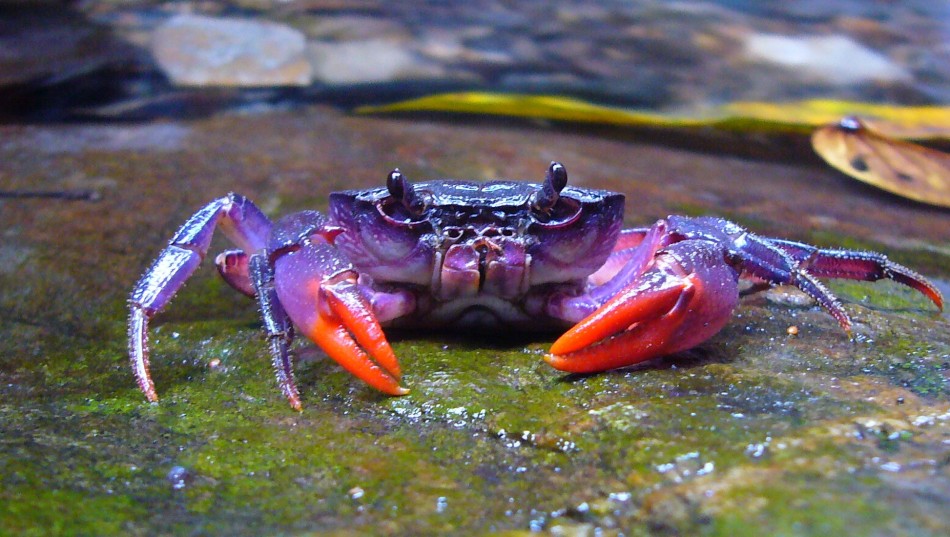Rare Purple Crab Species Identified in Threatened Palawan Biodiversity [PHOTOS]
A rare species of purple crabs called the Insulamon palawanense is among four new crab species recently discovered in a research programme on the island of Palawan.
Scientists at the Senckenberg Research Institute in Dresden and De La Salle University in Manila have discovered the specie during their Aqua Palawana research programme.
The unique biodiversity in which the species were found is under threat. The new crab species found are endemic to only a few islands and are unable to spread elsewhere. Around 50 per cent of the species living on Palawan are defined as endemic, as they are exclusively native to the island.
In fact, the entire region was declared a Unesco biosphere reserve in 1991 and it is subjected to the specific Strategic Environmental Plan (SEP) for Palawan.
Various mining projects carried in the region pose a huge threat to these creatures. As such, the research stresses on the necessity to protect this unique biodiversity and thereby save the threatened species found there.
"The smaller the remaining natural habitat the greater is the risk to endemic fauna and flora. Even minor environmental changes can lead to extinctions. It is all the more important to do research in this region and show that the biodiversity of these islands is unique and worth protecting", said Dr Hendrik Freitag from the Senckenberg Natural History Collections in Dresden.
According to National Geographic, Freitag described the four new crabs, each between about an inch (2.5 centimetres) to 2 inches (5.3 centimetres) wide from museum specimens and individuals collected during two field surveys in Palawan. Only one other species, I. unicorn, is already known in the genus, and it was identified in 1992.
The Aqua Palawana is a research programne by Germany's scientific institutes Senckenberg and Phyllodrom Leipzig, which has been investigating the biodiversity of Palawan's inland waters for over 10 years. Involved in the programme are researchers and local students from Ateneo de Manila University, De La Salle University in Manila, Western Philippines University, Philippine National Museum, Vienna Natural History Museum and the National University of Singapore.
Catch a glimpse of the unique crab species:





© Copyright IBTimes 2025. All rights reserved.



















